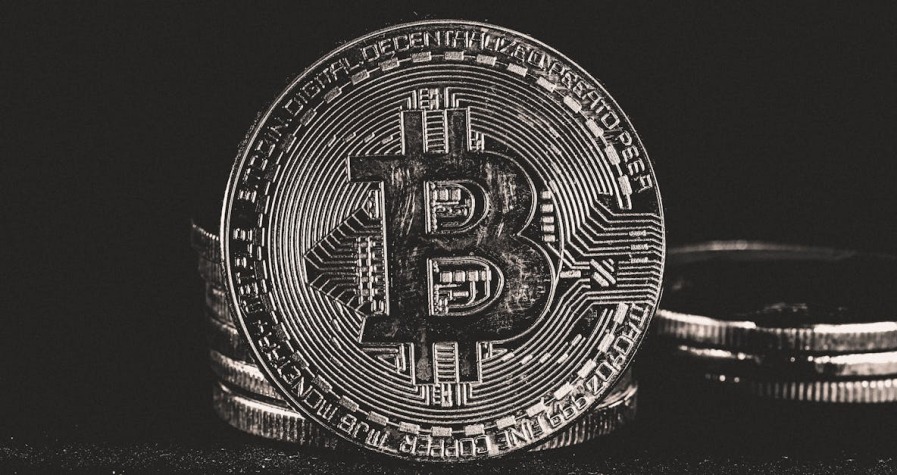Key Takeaways
- Cross-chain technology connects isolated blockchain networks, enabling seamless communication and asset transfers between different chains like Bitcoin, Ethereum, and Solana without requiring centralised intermediaries
- Three primary mechanisms facilitate interoperability: blockchain bridges lock/mint tokens across networks, atomic swaps enable direct peer-to-peer exchanges, and wrapped tokens represent assets from one blockchain on another
- Key benefits include enhanced liquidity and reduced costs, as assets can move freely between networks, avoiding expensive third-party services whilst improving price stability and market accessibility
- Real-world applications span DeFi, NFTs, and gaming, allowing users to access multiple blockchain ecosystems simultaneously, maximise earning potential, and create interconnected virtual economies
- Security vulnerabilities and technical complexity pose significant challenges, including risks from flawed smart contracts, centralisation points, and the intricate nature of managing multiple blockchain architectures
- Popular platforms like LayerZero, Polkadot, and Cosmos are leading cross-chain innovation, with future developments promising faster transaction speeds, native interoperability, and unified multi-chain networks
You’ve probably heard about Bitcoin Ethereum and other blockchain networks operating as separate digital islands. Each blockchain has its own unique features and capabilities but they can’t easily communicate with one another. This isolation creates significant barriers for users who want to move assets or data between different networks.
Cross-chain technology emerges as the bridge-building solution that connects these isolated blockchain ecosystems. It enables seamless communication and asset transfers between different blockchain networks without requiring intermediaries or complex workarounds.
Understanding cross-chain technology is crucial if you’re involved in cryptocurrency trading DeFi applications or blockchain development. This technology represents a fundamental shift towards blockchain interoperability and could revolutionise how we interact with decentralised systems across multiple networks.
What Is Cross-Chain Technology?
Cross-chain technology represents a collection of protocols and mechanisms that enable different blockchain networks to communicate and transfer data or assets directly. You encounter this technology as a bridge between isolated blockchain ecosystems that previously operated without any connection to each other.
The fundamental architecture of cross-chain systems operates through several key components that facilitate interoperability. Smart contracts serve as the primary execution layer on participating blockchains whilst validators or relayers monitor and verify transactions across networks. Cryptographic proofs ensure the security and authenticity of cross-chain transfers without requiring you to trust centralised intermediaries.
| Cross-Chain Component | Function | Example |
|---|---|---|
| Bridge Protocols | Asset transfer mechanism | Ethereum to Polygon bridge |
| Atomic Swaps | Direct peer-to-peer exchange | Bitcoin to Litecoin swap |
| Wrapped Tokens | Asset representation | Wrapped Bitcoin (WBTC) |
| Relay Networks | Transaction validation | Chainlink Cross-Chain Interoperability Protocol |
Cross-chain technology addresses three primary challenges in blockchain ecosystems. Asset mobility becomes possible when you want to move cryptocurrency or tokens from one blockchain to another. Data sharing enables smart contracts on different networks to access and utilise information from external blockchains. Functionality expansion allows you to leverage the unique features of multiple blockchains within a single application.
The technical implementation varies depending on the specific cross-chain solution. Notary schemes rely on trusted third parties to validate and facilitate transfers between chains. Hash time-locked contracts create conditional transactions that execute only when specific cryptographic conditions are met. Sidechains operate as independent blockchains that maintain connections to main networks through two-way pegs.
You benefit from cross-chain technology through improved liquidity access across decentralised finance platforms and enhanced functionality in blockchain applications. The technology eliminates the friction of converting assets through centralised exchanges whilst maintaining the security and decentralisation principles of blockchain systems.
How Cross-Chain Technology Works
Cross-chain technology operates through mechanisms that validate transactions on a source blockchain and relay these to a target blockchain to complete asset transfers or data exchanges. You’ll encounter three primary methods that enable seamless interoperability across different blockchain networks.
Blockchain Bridges
Cross-chain bridges serve as protocols connecting two or more blockchains, enabling you to transfer assets and facilitate communication between different networks. These bridges function by locking or burning your tokens on the source blockchain through smart contracts whilst simultaneously unlocking or minting equivalent tokens on the destination chain.
You’ll often find these transferred assets represented as wrapped tokens that maintain the original asset’s value. Bridges like Wormhole connect major networks such as Ethereum and Solana, providing you with access to multiple blockchain ecosystems. Some bridges target specific blockchain pairs whilst others support programmable token interactions including swapping, lending, or staking across different chains.
Atomic Swaps
Atomic swaps provide you with smart contract-based mechanisms that enable direct peer-to-peer exchanges of tokens across different blockchains without requiring intermediaries or centralised exchanges. You can execute trustless, non-custodial, and secure token swaps that significantly reduce counterparty and hacking risks.
This technology employs cryptographic protocols ensuring that either both sides of your trade complete successfully or neither executes, eliminating any risk of partial transaction completion. You benefit from complete control over your assets throughout the entire swap process without relying on third-party custody services.
Wrapped Tokens
Wrapped tokens represent assets from one blockchain operating on another blockchain following a precise 1:1 peg ratio. You’ll recognise examples such as Wrapped Bitcoin (WBTC) on Ethereum, which represents Bitcoin’s value whilst functioning within the Ethereum ecosystem.
You can create these tokens by locking your original asset and issuing an equivalent token on the target chain through bridges or custodial solutions. This mechanism allows you to access the functionality of different blockchains whilst maintaining exposure to your preferred assets, extending cross-chain interoperability beyond simple transfers to enable complex decentralised applications operating across multiple blockchain networks.
Benefits of Cross-Chain Technology
Cross-chain technology delivers significant advantages that transform how you interact with blockchain networks. These benefits address fundamental limitations of isolated blockchain systems whilst creating new opportunities for seamless digital asset management.
Enhanced Liquidity
Enhanced liquidity represents the primary benefit you gain from cross-chain technology by connecting previously isolated blockchain networks. Your digital assets can now move freely between platforms like Bitcoin, Ethereum, and Solana without complex procedures or third-party involvement. This increased asset mobility reduces price volatility and slippage, making markets more stable and accessible for your trading activities.
The technology allows you to unlock Bitcoin’s value on Ethereum-based decentralised exchanges or use Ethereum tokens on faster networks like Polygon. Your access to diverse markets improves significantly as businesses can serve multiple blockchain ecosystems efficiently. Liquidity pools across different networks become interconnected, providing you with better price discovery and deeper market depth for your transactions.
Improved User Experience
Improved user experience emerges from cross-chain technology’s ability to eliminate friction in your blockchain interactions. You no longer require multiple wallets or centralised exchanges to manage assets across different networks. The technology enables direct transfers and communications between blockchains, making your transaction process quicker and more straightforward.
Cross-chain solutions help you avoid network congestion experienced on single blockchains like Ethereum during peak usage periods. Your transactions process faster with reduced delays, whilst scalability improves across your chosen blockchain platforms. The seamless interoperability allows you to access decentralised applications on any network without switching between different interfaces or learning new protocols.
Reduced Transaction Costs
Reduced transaction costs become achievable through cross-chain protocols that distribute your transaction load across multiple networks. This distribution reduces congestion on any single blockchain, lowering your overall transaction fees significantly. The technology eliminates expensive intermediary services whilst providing faster processing times for your asset transfers.
Cross-chain mechanisms trim your costs by avoiding third-party services typically required for moving assets between networks. Your savings become particularly notable in decentralised finance applications where high fees often limit smaller transactions. The reduced costs make blockchain technology more accessible for everyday use cases, enabling you to engage with multiple networks without prohibitive expense barriers.
Types of Cross-Chain Solutions
Cross-chain solutions exist in three distinct categories, each offering unique approaches to blockchain interoperability. Understanding these types helps you choose the most suitable solution for your specific cross-chain requirements.
Centralised Bridges
Centralised bridges operate through trusted third parties or validator sets that facilitate asset transfers between blockchain networks. These solutions rely on centralised entities to lock assets on one blockchain whilst minting equivalent tokens on the destination chain.
Key characteristics include:
- Federated bridges using multiple validators for transaction verification
- Relay bridges employing notary schemes for cross-chain communication
- Fast processing times typically ranging from 5-30 minutes per transfer
- Lower computational requirements compared to decentralised alternatives
Centralised bridges offer efficiency and speed but introduce counterparty risks since users must trust the bridge operators. Popular examples include many wrapped Bitcoin implementations and certain exchange-operated bridges that prioritise transaction speed over complete decentralisation.
Decentralised Bridges
Decentralised bridges utilise smart contracts and cryptographic proofs to enable cross-chain transfers without central authorities. These systems maintain trustlessness by relying on mathematical verification rather than human intermediaries.
Core mechanisms encompass:
- Lock-and-mint protocols securing original assets whilst creating wrapped versions
- Burn-and-mint systems destroying tokens on source chains and creating new ones
- Multi-signature schemes requiring consensus from multiple validators
- Zero-knowledge proofs providing cryptographic verification of cross-chain states
Decentralised bridges typically require 30 minutes to several hours for completion due to their computational intensity. Examples include protocols like Multichain and various Ethereum-based bridges that prioritise security over speed whilst maintaining blockchain principles.
Native Cross-Chain Protocols
Native cross-chain protocols represent blockchain architectures designed with interoperability as their fundamental feature. These systems create ecosystems where multiple chains communicate seamlessly within unified frameworks.
Distinguished features comprise:
- Hub-and-spoke models connecting multiple chains through central relay chains
- Shared security mechanisms allowing smaller chains to benefit from collective validation
- Inter-blockchain communication protocols enabling direct chain-to-chain messaging
- Unified development environments supporting applications across multiple chains
Polkadot’s parachain architecture exemplifies native cross-chain design, connecting over 100 specialised blockchains through its relay chain. Cosmos operates similarly with its Inter-Blockchain Communication protocol, facilitating transfers between 50+ connected chains whilst maintaining individual chain sovereignty.
Real-World Applications of Cross-Chain Technology
Cross-chain technology transforms multiple sectors by enabling seamless asset transfers and data exchange between previously isolated blockchain networks. You can now access expanded opportunities across decentralised finance platforms, NFT marketplaces, and gaming ecosystems through these innovative interoperability solutions.
Decentralised Finance (DeFi)
Cross-chain DeFi platforms revolutionise your access to financial services by connecting assets and liquidity pools across multiple blockchain networks. You can manage lending positions on Ethereum whilst simultaneously accessing staking rewards on Solana without converting between different cryptocurrencies or using centralised exchanges.
These platforms integrate automated portfolio rebalancing features that optimise your asset allocation across various chains based on yield opportunities and risk parameters. You participate in DAO governance decisions that affect multiple blockchain ecosystems whilst maintaining control over your assets through decentralised protocols.
Cross-chain liquidity pools enable you to provide liquidity simultaneously across Bitcoin, Ethereum, and other networks, diversifying your risk exposure whilst maximising earning potential. Your transactions execute seamlessly without relying on centralised intermediaries that traditionally charge high fees and introduce counterparty risks.
Non-Fungible Tokens (NFTs)
Cross-chain NFT marketplaces expand your creative and investment opportunities by enabling NFT creation, trading, and display across different blockchain networks. You can mint an NFT on Ethereum and subsequently display it within Solana-based virtual galleries or trade it on Polygon marketplaces.
Artists benefit from accessing broader audiences and reduced transaction costs by deploying their creations across multiple chains simultaneously. You overcome blockchain-specific limitations such as high gas fees on Ethereum by choosing networks with lower costs whilst maintaining asset authenticity and ownership records.
Your NFT collections gain enhanced utility through cross-chain compatibility, allowing digital assets to function as access tokens, gaming items, or membership credentials across various platforms. This interoperability creates new revenue streams for creators whilst providing collectors with more flexible asset management options.
Cross-Chain Gaming
Gaming platforms leverage cross-chain technology to create interconnected virtual economies where your in-game assets transfer seamlessly between different games and blockchain ecosystems. You can earn rare weapons in one blockchain-based game and use them as collateral for loans in DeFi protocols on another network.
Cross-chain gaming enables you to stake gaming tokens earned on one platform within yield farming protocols on different blockchains, maximising your earning potential. Your character progression, achievements, and virtual assets maintain value across multiple gaming environments rather than being locked within single ecosystems.
These platforms facilitate broader adoption by allowing you to trade gaming assets across multiple networks, creating liquid markets for virtual items. You access enhanced gaming experiences through interoperable assets that function across various games, increasing their utility and long-term value retention.
Challenges and Risks
Cross-chain technology introduces significant challenges that you must carefully consider before implementing these solutions. Understanding these risks helps you make informed decisions about which cross-chain protocols best suit your needs.
Security Vulnerabilities
Cross-chain systems expose you to heightened security risks due to their complexity and interdependence across multiple blockchains. Bridges represent the most vulnerable component, as attackers frequently target these protocols because they must verify and process messages between different chains.
Your funds face risks from flawed smart contracts that enable unauthorised transfers, oracle manipulation attacks, and compromised validator networks. Poor private key management further exposes your assets to theft, whilst security weaknesses create cascading effects where compromising one blockchain jeopardises all linked chains.
Centralisation risks compound these vulnerabilities when validator power concentrates among few participants or single oracle providers control critical data feeds. These concentration points threaten network resilience and create single points of failure that attackers can exploit to compromise entire cross-chain ecosystems.
Technical Complexity
Cross-chain integration presents you with complex technical hurdles stemming from diverse blockchain architectures. Different networks employ varying consensus algorithms, transaction finality rules, and security models that complicate seamless interoperability.
Creating unified security frameworks across heterogeneous chains increases the attack surface whilst requiring advanced cryptographic solutions. You must manage multiple private keys and coordinate across distinct protocols, demanding sophisticated software engineering and deep blockchain expertise.
The intricate nature of cross-chain systems makes debugging and maintenance challenging, particularly when issues span multiple networks. Integration complexity grows exponentially as you add more blockchain connections, requiring extensive testing and validation processes to ensure reliable operation.
Regulatory Concerns
Centralised cross-chain bridges face stricter regulatory scrutiny due to their structural similarities to traditional financial institutions. Regulatory frameworks impose compliance requirements and legal constraints that may limit functionality and influence your user experience.
You encounter regulatory uncertainty as different jurisdictions develop varying approaches to cross-chain technology oversight. Centralised bridges must comply with anti-money laundering regulations, know-your-customer requirements, and securities laws that don’t uniformly apply to fully decentralised solutions.
These regulatory dynamics create uncertainty around cross-chain technology evolution and adoption, potentially affecting protocol development timelines and feature availability. Compliance costs may increase operational expenses for cross-chain service providers, potentially leading to higher fees for your transactions.
Popular Cross-Chain Projects and Platforms
Cross-chain technology’s evolution has produced several innovative platforms that address interoperability challenges across blockchain networks. You can leverage these established solutions to unlock new possibilities for asset transfers and decentralised applications.
LayerZero stands out as an advanced cross-chain messaging protocol that enables secure asset transfers across blockchains without centralised exchanges. This protocol operates through a unique omnichain approach, allowing applications to seamlessly communicate with multiple blockchain networks. You benefit from LayerZero’s ultra-light nodes and relayer systems that validate cross-chain transactions whilst maintaining security and decentralisation principles.
Wrapped tokens represent another fundamental cross-chain solution that brings assets from one blockchain to another. Wrapped Bitcoin (WBTC) serves as the most prominent example, enabling you to utilise Bitcoin’s value within Ethereum’s DeFi ecosystem. These tokens maintain a 1:1 peg ratio with their underlying assets through custodial mechanisms and smart contracts.
Polkadot operates as a native cross-chain platform that connects multiple specialised blockchains called parachains. You can access diverse functionalities across these interconnected chains whilst maintaining individual blockchain sovereignty. Polkadot’s relay chain coordinates communication and security across all connected parachains.
Cosmos provides an ecosystem of interconnected blockchains through its Inter-Blockchain Communication (IBC) protocol. This platform enables you to transfer assets and data across sovereign blockchains within the Cosmos network. Each blockchain maintains its governance and consensus mechanisms whilst participating in the broader ecosystem.
| Platform | Type | Key Features | Primary Use Cases |
|---|---|---|---|
| LayerZero | Messaging Protocol | Ultra-light nodes, omnichain applications | Asset transfers, cross-chain DeFi |
| WBTC | Wrapped Token | 1:1 Bitcoin peg, ERC-20 compatibility | Ethereum DeFi, liquidity provision |
| Polkadot | Native Cross-Chain | Parachains, shared security | Specialised blockchain communication |
| Cosmos | IBC Protocol | Sovereign chains, standardised communication | Cross-chain asset transfers, governance |
Cross-chain bridges connect established networks like Ethereum, Binance Smart Chain, and Polygon through various protocols. These bridges lock tokens on source chains and mint corresponding tokens on destination chains, enabling you to access different blockchain ecosystems. Popular bridges include Polygon Bridge, Arbitrum Bridge, and Multichain protocols.
Chainlink provides cross-chain interoperability through its Cross-Chain Interoperability Protocol (CCIP). This infrastructure enables you to send messages, transfer tokens, and trigger actions across multiple blockchain networks. Chainlink’s decentralised oracle network ensures reliable data transmission and verification across chains.
Programmable token bridges and arbitrary data messaging protocols continue emerging to support complex cross-chain applications. These advanced solutions enable you to access decentralised exchanges (DEXs), cross-chain lending platforms, staking protocols, and gaming applications across multiple blockchain networks simultaneously.
Future of Cross-Chain Technology
Cross-chain technology represents your gateway to blockchain scalability, offering solutions that deliver faster block times, enhanced security transactions, and significantly reduced fees. You’re witnessing the emergence of infrastructure that transforms isolated blockchain networks into interconnected ecosystems capable of seamless collaboration.
Your access to multi-chain functionality expands dramatically as cross-chain protocols mature. These advanced systems enable direct network-to-network communication without intermediaries, creating opportunities for widespread adoption across industries. You’ll experience more efficient asset transfers, enhanced liquidity pools, and streamlined decentralised applications that operate across multiple blockchain environments simultaneously.
Web 3.0 development relies fundamentally on cross-chain interoperability to achieve its vision of seamless digital interaction. You’re observing the construction of foundational infrastructure that supports unprecedented levels of communication and asset exchange between previously incompatible networks. This interoperability drives innovation in decentralised finance, non-fungible token marketplaces, and gaming platforms that operate across blockchain boundaries.
| Technology Advancement | Current Status | Future Impact |
|---|---|---|
| Transaction Processing Speed | 15-65 seconds average | Sub-second confirmation times |
| Network Interoperability | Limited bridge protocols | Native cross-chain communication |
| Security Framework | Multi-signature validation | Zero-knowledge proof integration |
| Ecosystem Integration | Isolated blockchain silos | Unified multi-chain networks |
Your engagement with cross-chain technology becomes increasingly seamless as protocols implement sophisticated cryptographic proofs, advanced consensus mechanisms, and automated validation systems. These improvements eliminate technical barriers that currently limit blockchain adoption whilst maintaining the security and decentralisation principles essential to distributed networks.
Expect comprehensive integration of cross-chain solutions across traditional financial institutions, enterprise applications, and consumer platforms. You’ll witness the development of unified blockchain ecosystems where asset transfers, data sharing, and application interactions occur transparently across multiple networks without requiring technical expertise or complex wallet management.
Conclusion
Cross-chain technology represents a pivotal advancement that’s reshaping the blockchain landscape by breaking down barriers between isolated networks. As you’ve seen throughout this exploration the technology offers transformative benefits that extend far beyond simple asset transfers.
The evolution from fragmented blockchain silos to interconnected ecosystems opens unprecedented opportunities for innovation across DeFi gaming and NFT sectors. While challenges around security and technical complexity remain the continued development of robust protocols demonstrates the technology’s resilience and potential.
Your understanding of cross-chain mechanisms positions you to navigate this rapidly evolving space more effectively. Whether you’re a developer trader or blockchain enthusiast recognising these interoperability solutions will prove invaluable as the industry moves towards a truly connected multi-chain future where seamless interaction becomes the standard rather than the exception.
Frequently Asked Questions
What is cross-chain technology?
Cross-chain technology is a collection of protocols and mechanisms that enable different blockchain networks to communicate and transfer data or assets directly. It acts as a bridge between previously isolated blockchain ecosystems like Bitcoin and Ethereum, allowing seamless interaction without requiring centralised intermediaries or multiple wallets.
How do blockchain bridges work?
Blockchain bridges connect multiple blockchains and facilitate asset transfers by locking or burning tokens on the source chain whilst minting equivalent tokens on the destination chain. They maintain a 1:1 ratio between original and bridged assets, enabling users to move digital assets across different blockchain networks securely.
What are the main benefits of cross-chain technology?
Cross-chain technology offers three primary benefits: enhanced liquidity by allowing assets to move freely between platforms, improved user experience by eliminating the need for multiple wallets, and reduced transaction costs through distributing loads across multiple networks, making blockchain technology more accessible for everyday use.
What are atomic swaps?
Atomic swaps are smart contracts that enable direct peer-to-peer exchanges of tokens across different blockchains without intermediaries. They use hash time-locked contracts to ensure that either both parties receive their tokens or the transaction is cancelled entirely, providing a trustless way to trade assets between different networks.
What security risks are associated with cross-chain protocols?
Cross-chain protocols face several security vulnerabilities including flawed smart contracts, oracle manipulation, and centralisation issues that create single points of failure. Bridge protocols are particularly targeted by attackers due to their complexity and the large amounts of assets they often hold across multiple blockchain networks.
What are wrapped tokens?
Wrapped tokens represent assets from one blockchain on another blockchain whilst maintaining a 1:1 peg ratio with the original asset. For example, Wrapped Bitcoin (WBTC) allows Bitcoin to be used on the Ethereum network, enabling access to DeFi applications whilst preserving the original Bitcoin’s value.
How does cross-chain technology benefit DeFi?
Cross-chain DeFi platforms enhance access to financial services by connecting assets and liquidity pools across multiple networks. Users can manage lending positions, staking rewards, and trading activities without needing to convert currencies, accessing better rates and opportunities across different blockchain ecosystems simultaneously.
What is the difference between centralised and decentralised bridges?
Centralised bridges operate through trusted third parties, offering efficiency and speed but introducing counterparty risks. Decentralised bridges utilise smart contracts and cryptographic proofs for trustless transfers, prioritising security over speed. Each approach offers different trade-offs between convenience, security, and decentralisation principles.
Which platforms support native cross-chain functionality?
Polkadot and Cosmos are leading native cross-chain platforms designed with interoperability as a core feature. Polkadot uses parachain architecture whilst Cosmos employs the Inter-Blockchain Communication protocol, both facilitating interactions among numerous connected blockchains whilst maintaining their individual sovereignty and unique characteristics.
How will cross-chain technology shape the future of blockchain?
Cross-chain technology will enhance blockchain scalability through faster transaction speeds, improved security, and reduced fees. It’s essential for Web 3.0 development, supporting innovation in DeFi, NFT marketplaces, and gaming platforms. The technology promises to eliminate technical barriers and facilitate seamless multi-chain integration.









